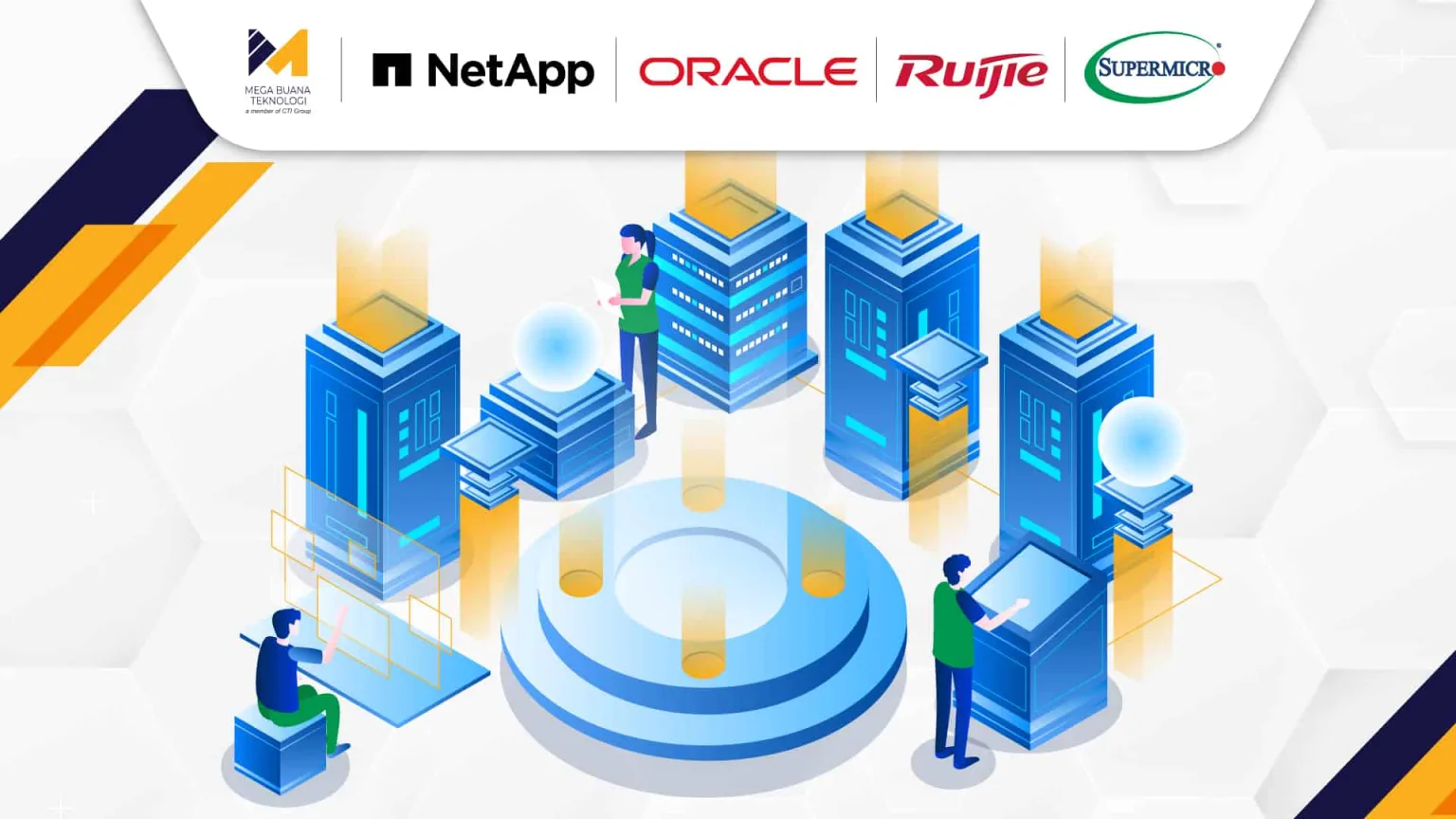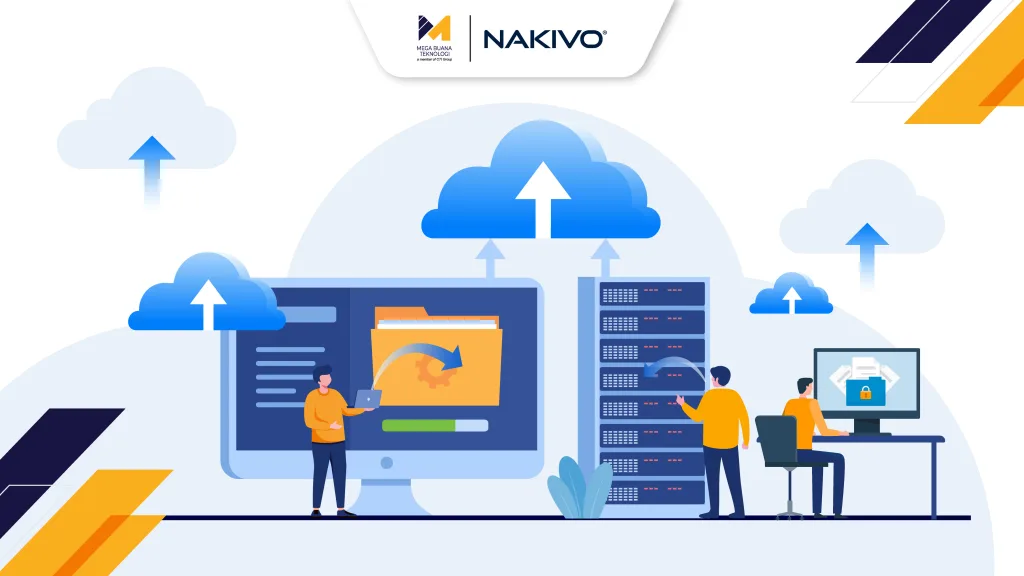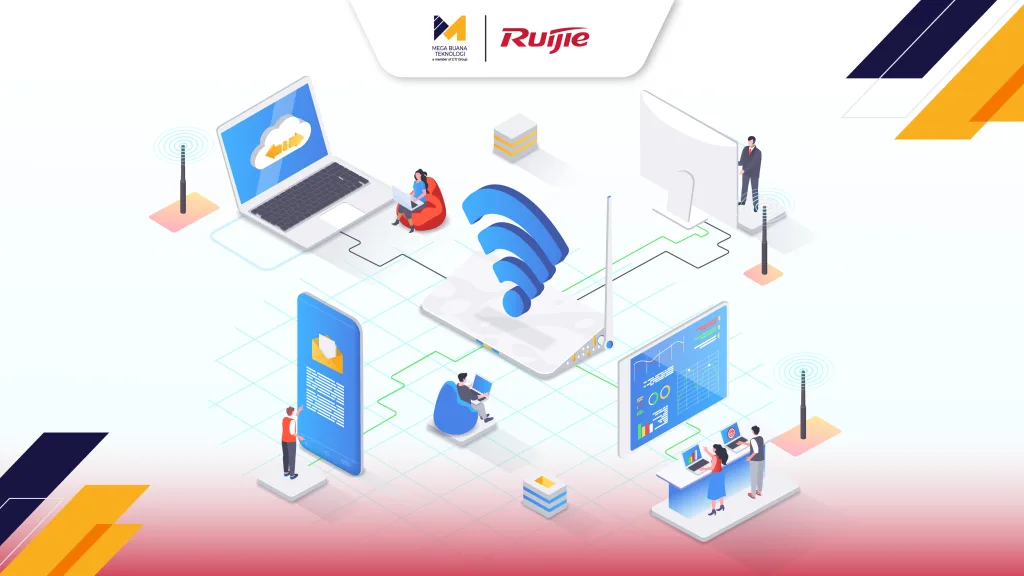Frequent server crashes, full storage, and hard-to-scale applications—these are still classic problems many businesses face. In today’s ultra-digital world, IT isn’t just support—it’s the foundation of innovation and growth.
Without modern infrastructure, IT becomes a burden: slow, expensive, and inflexible. But with modernization, you get systems that are resilient, agile, and scalable—ready to power your long-term growth.
In this article, we’ll explore what modern infrastructure means, why it matters, the solutions available, and the trends that are reshaping how businesses operate.
What is Modern Infrastructure?
When you hear the term modern infrastructure, you probably picture sleek, cutting-edge technology designed to keep up with the speed of today’s business world.
It’s far more than just replacing old physical servers. Think cloud computing, virtualization, and automation, technologies that completely redefine how your IT systems work, making them more efficient, adaptable, and future-ready.
Imagine being able to store and access your data in the cloud, with no physical server limits. That means your business can scale up or down instantly, depending on demand.
Virtualization lets you run multiple applications on a single device, maximizing your resources. And with automation, repetitive tasks can be handled automatically, saving time, cutting down on human error, and freeing up your team to focus on more strategic work.
Why Businesses Need to Make the Shift to Modern Infrastructure

Legacy systems were once the backbone of many organizations. But in today’s fast-paced digital world, outdated technology can quickly turn from an asset into a roadblock. That’s why modernizing your infrastructure is no longer optional; it’s essential.
1. Move Faster, Innovate Smarter
Speed is everything in the digital era. With modern infrastructure, your IT team can release applications faster and more frequently. It empowers your business to innovate at scale, giving you a real competitive edge in the market.
2. Performance Without Compromise
Modern technology is built to handle demand. Whether it’s a spike in users or increased workload, modern infrastructure offers the scalability and reliability your applications need to perform smoothly, no matter what.
3. Lower Operational Costs
Maintaining legacy systems is not just complicated, it’s costly. By modernizing, businesses can shift to a more cost-efficient, flexible infrastructure that’s easier to manage and scale as they grow.
4. Stronger Security, Built-In
Old systems often lack the security updates needed to fend off today’s cyber threats. Modern infrastructure comes equipped with the latest security features, keeping your data safe and helping you stay compliant with evolving regulations.
5. Seamless Integration with Modern Tools
Legacy systems tend to work in silos and struggle to connect with new technologies. In contrast, modern infrastructure is designed to integrate easily with today’s platforms and tools, streamlining data flows, enabling automation, and boosting cross-team collaboration.
Traditional vs. Modern IT Infrastructure: Which One Wins?
| Aspect | Traditional Infrastructure | Modern Infrastructure |
| Scalability | Difficult to scale, requires new hardware | Easily scalable through the cloud flexible |
| Operational Costs | High, due to maintenance and hardware upgrades | More cost-effective, subscription-based |
| Implementation Speed | Slow, physical installation takes time | Fast, instant proviosioning via cloud |
| Accesibility | Limited, can only be accessed from certain locations | Flexible, accessible from anywhere online |
| Security | Vulnerable, difficult to update and prone to security gaps | Stronger, with automatic updates and the latest security support |
| Maintenance | Manual | Automated |
| Integration of New Tech | Difficult, closed and inflexible systems | Easy, compatible with APIs and modern technologies |
| Business Responsivness | Less responsive | Highly adaptive to business trends |
6 Challenges of Managing Modern IT Infrastructure
Modern infrastructure brings a lot to the table, but it’s not without its challenges. For many businesses, the journey of migrating to and managing a modern IT environment can feel like navigating a maze. Here are some of the most common hurdles:
Compatibility Issues
Moving to new platforms can lead to compatibility problems with legacy software. It’s crucial to ensure that old and new systems can work together without disrupting business operations.
Complex Data Migration
Migrating data from legacy systems to a modern infrastructure is rarely simple. It requires careful validation to make sure data stays intact, accurate, and secure throughout the process.
Maintaining Business Continuity
System upgrades need to be strategically planned to avoid downtime and keep business operations running smoothly. Even minor disruptions can have a big impact if not properly managed.
Skill Gaps
Shifting to a modern infrastructure demands expertise in areas like cloud computing, DevOps, and AI. That means investing in training your existing team or bringing in new talent with the right skill set.
Costs and ROI Concerns
Modern infrastructure isn’t cheap. Businesses must calculate ROI carefully to ensure the investment leads to meaningful, long-term benefits.
Security and Compliance Risks
Modern platforms introduce new layers of complexity in security and compliance. Businesses need to stay vigilant to protect sensitive data and meet evolving regulatory standards.
Types of Modern Infrastructure Solutions to Simplify IT Management
Modern infrastructure offers a range of solutions that help organizations build systems that are more flexible, scalable, and efficient. Here are three key approaches that can support your digital transformation goals:
Cloud-Native Infrastructure
Cloud-native infrastructure fully embraces the power of cloud computing, using containers, microservices, and automation tools like Kubernetes. This approach allows applications to run seamlessly across public, private, or hybrid cloud environments with high flexibility.
The result? Faster app development and deployment, better scalability, and more efficient resource use. It’s an ideal solution for companies undergoing digital transformation and needing to respond quickly to market demands.
Hyperconverged Infrastructure (HCI)
HCI combines computing, storage, and networking into a single, easy-to-manage platform. Unlike traditional setups where each component is siloed, HCI simplifies operations and makes scaling as easy as adding another node.
With centralized control and a software-defined approach, HCI delivers high efficiency, perfect for workloads like virtual desktop infrastructure (VDI), disaster recovery, and other critical business applications.
Composable Infrastructure
Composable infrastructure breaks down physical components like compute, storage, and networking into flexible resource pools. These can be dynamically allocated and reassembled based on real-time needs.
This approach eliminates overprovisioning and ensures better resource utilization. For businesses, it means more agility and the ability to quickly adapt to changing demands, without wasting time or money.
Read More: All About Database Management Systems (DBMS): The Smart Way to Manage Business Data
Modern Infrastructure Trends That Are Transforming the Way Businesses Operate

Modern infrastructure is evolving rapidly, driven by key trends that are reshaping how we work and innovate. Here are three major trends currently shaping the future of IT infrastructure.
Scalability and Resource Flexibility
Modern infrastructure offers the ability to scale resources dynamically based on demand. With cloud computing and automation, businesses can quickly and efficiently allocate resources to handle growing digital workloads. This enables organizations to remain agile and responsive to sudden market changes or business needs.
Software-Defined Architecture
Software-defined architecture is gaining traction as it allows for centralized management, enhanced agility, better efficiency, and improved security. This approach enables businesses to easily adapt to new technologies without relying on outdated physical hardware. It also gives organizations more freedom to respond to fast-changing technology trends.
Building a SaaS-Based Stack
The adoption of Software-as-a-Service (SaaS) continues to grow as it simplifies infrastructure management and reduces capital expenditures. With SaaS, IT teams can shift their focus from maintenance to innovation and developing core business capabilities. This opens more opportunities for businesses to focus on what truly matters while streamlining operations.
Modern Infrastructure Solutions from NetApp, Oracle, and Ruijie Networks
The development and implementation of modern infrastructure is inseparable from the advanced technologies offered by leading solution providers. Here are three solutions, each with a unique approach in data management, flexible cloud, and resilient networking, that can accelerate your business infrastructure transformation.
NetApp: Unified Data Management for the Hybrid and AI Era
NetApp delivers integrated solutions tailored for increasingly complex hybrid infrastructures. Designed to support various workloads, from traditional systems to cloud-native environments, NetApp empowers organizations to consistently manage and optimize data across hybrid cloud environments.
A key offering from NetApp is Cloud Volumes ONTAP, which enhances storage efficiency through:
- Data deduplication and compression
- Thin provisioning
- Automatic data tiering between high- and low-performance storage, with no downtime
NetApp also provides enterprise-grade features such as:
- SnapMirror for data replication
- BlueXP for backup and recovery
- Advanced protection tools including encryption and ransomware detection
For workload consistency, SnapCenter ensures application-level data integrity, especially critical for workloads like Oracle databases. NetApp also stands out with powerful capabilities for AI and analytics, ensuring fast data availability in pipelines to accelerate machine learning and business insights.
Oracle: Flexible Distributed Cloud, Anywhere You Need It
Oracle brings a distributed cloud approach that works anywhere, across public cloud, on-premises, and even multicloud scenarios. This flexibility allows businesses to align infrastructure with local requirements, regulations, and strategic needs.
Some key Oracle advantages include:
- Seamless integration with Microsoft Azure (fully multicloud-ready)
- High-performance cross-cloud connectivity
- Consistent pricing and services for both commercial and government sectors
For hybrid cloud, Exadata Cloud@Customer enables powerful database performance directly within your data center.
Looking for a more exclusive cloud? Oracle Alloy and OCI Dedicated Region provide access to over 100 cloud services, deployable right inside your facilities.
With its combination of flexibility, regulatory compliance, and enterprise-grade capabilities, Oracle is an ideal choice for organizations that require location-agnostic cloud solutions.
Ruijie Networks: Resilient and Easy-to-Manage Modern Networking
Ruijie Networks focuses on the networking layer, offering efficient, reliable, and easy-to-manage infrastructure suited for enterprises, government institutions, and educational environments.
Its portfolio includes:
- Enterprise-grade switches
- Wireless access points
- Cloud-based network management systems
With a proven track record on large-scale projects like the China Twin Towers, Ruijie showcases its ability to deliver robust, high-availability networks with no downtime.
Notable features include:
- Intelligent network segmentation
- Automated Quality of Service (QoS)
- Cloud-managed provisioning for simplified deployment
Through Ruijie Cloud, centralized management allows real-time monitoring and troubleshooting, without requiring expensive additional tools, making it a cost-effective and scalable solution for modern network demands.
Ready to Take the Leap into Modern Infrastructure?
As an authorized distributor of Oracle, Ruijie, and NetApp, Mega Buana Teknologi (MBT), a subsidiary of CTI Group, is here to support your infrastructure transformation journey. Backed by a team of experienced IT professionals, we ensure a smooth, efficient implementation process free from costly trial-and-error.
MBT also offers comprehensive 24/7 IT support, covering everything from planning and deployment to post-implementation. All designed to give you peace of mind and confidence in building a stronger digital foundation.
Want to see how our solutions can be tailored to fit your business needs?
Contact the MBT team today and take the first step toward a smarter, more modern IT infrastructure.
Author: Wilsa Azmalia Putri – Content Writer CTI Group




